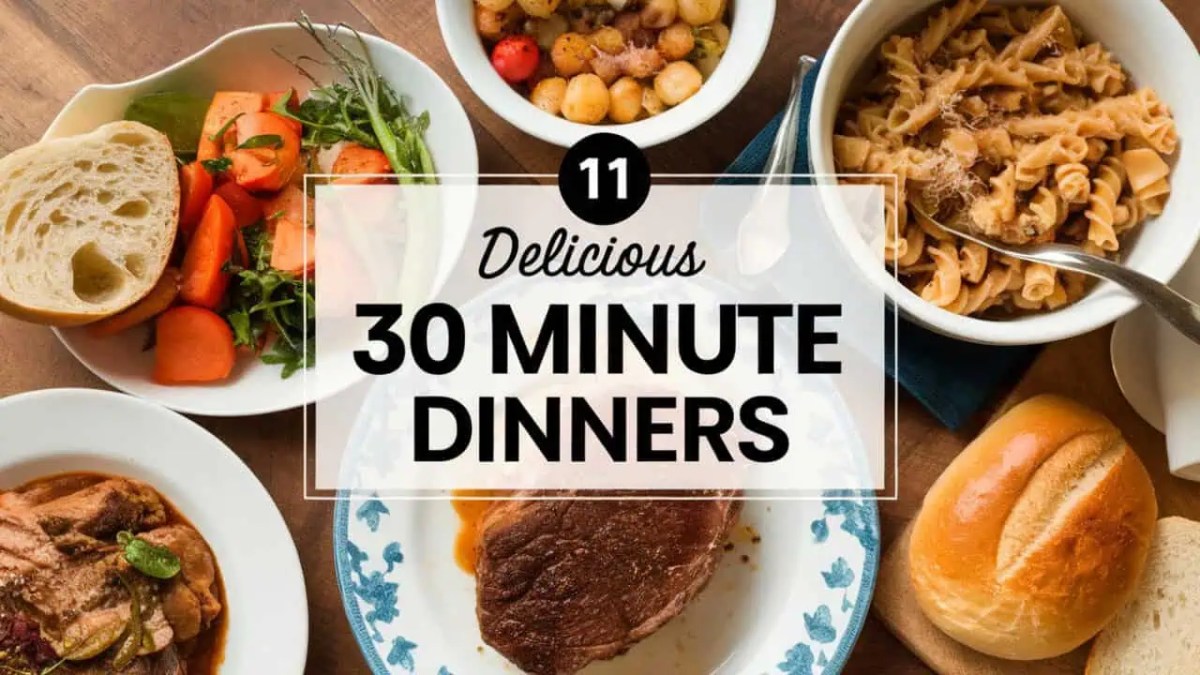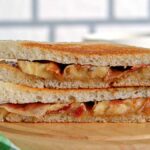Embark on a culinary journey where deliciousness knows no bounds! “Cooking Without Compromise: Delicious Allergen-Free Ideas” unveils a world of flavorful recipes crafted for those with dietary restrictions. Learn to confidently navigate allergen-free baking and cooking, mastering techniques to achieve textures and tastes that rival traditional dishes. From perfectly risen allergen-free cakes to vibrant savory stir-fries, this guide empowers you to create meals that are both satisfying and safe.
Discover the secrets to successful ingredient substitutions, transforming familiar recipes into allergen-free masterpieces. Explore a comprehensive pantry guide, stocking your kitchen with essential allergen-free staples. We’ll delve into meal planning strategies, ensuring your week is filled with delightful and worry-free meals. Prepare to expand your culinary horizons and redefine what’s possible in the kitchen.
Allergen-Free Baking Fundamentals
Baking without common allergens requires careful ingredient substitution and a nuanced understanding of how these substitutions affect texture and rise. Mastering these fundamentals unlocks a world of delicious, inclusive treats for everyone to enjoy. This section will explore common allergens, their replacements, and techniques for achieving optimal results in allergen-free baking.
Common Allergens and Their Substitutes
Understanding the role of common allergens in baking is crucial for successful substitution. Wheat provides structure and gluten, dairy adds richness and moisture, eggs bind ingredients and contribute to leavening, and nuts offer flavor and texture. Replacing these requires careful consideration of their individual functions.
| Allergen | Function in Baking | Allergen-Free Substitute | Considerations |
|---|---|---|---|
| Wheat (Gluten) | Structure, elasticity | Gluten-free flour blends (e.g., almond flour, coconut flour, rice flour blends), xanthan gum or guar gum | Gluten-free flours often require additional binding agents to mimic gluten’s elasticity. The ratio of flour to liquid may need adjustment. |
| Dairy | Moisture, richness, flavor | Unsweetened applesauce, mashed banana, plant-based milks (e.g., almond milk, soy milk), dairy-free yogurt | The flavor profile of the substitute can affect the final product. Adjust sweetness accordingly. |
| Eggs | Binding, leavening, moisture | Flax eggs (ground flaxseed meal mixed with water), applesauce, mashed banana, commercial egg replacers | Flax eggs provide a slightly nutty flavor. Applesauce and banana add moisture but may alter the texture slightly. |
| Nuts | Flavor, texture | Sunflower seeds, pumpkin seeds, tahini, coconut flakes | The texture and flavor of substitutes will differ. Consider the overall flavor profile when choosing replacements. |
Allergen-Free Cake Recipe: Simple Vanilla Almond Cake
This recipe uses almond flour for a naturally gluten-free and moist cake. The texture is delicate and slightly crumbly, characteristic of almond flour-based cakes. The subtle almond flavor complements the vanilla beautifully.
Ingredients: 1 cup almond flour, ½ cup granulated sugar, ¼ cup unsweetened applesauce, 2 large eggs, 1 teaspoon vanilla extract, 1 teaspoon baking powder, ¼ teaspoon salt.
Instructions: Preheat oven to 350°F (175°C). Grease and flour an 8-inch cake pan. Whisk together dry ingredients. In a separate bowl, combine wet ingredients. Gently fold wet ingredients into dry ingredients. Pour batter into prepared pan and bake for 25-30 minutes, or until a toothpick inserted into the center comes out clean.
Allergen-Free Cookie Recipe: Chewy Chocolate Chip Cookies
These cookies utilize a blend of gluten-free flours for a satisfyingly chewy texture. The addition of dairy-free chocolate chips creates a rich, decadent treat.
Ingredients: 1 cup gluten-free flour blend (containing rice flour, tapioca starch, and xanthan gum), ½ cup brown sugar, ¼ cup granulated sugar, ½ cup dairy-free butter, 1 teaspoon vanilla extract, ½ cup dairy-free chocolate chips.
Instructions: Preheat oven to 375°F (190°C). Cream together butter and sugars until light and fluffy. Beat in vanilla extract. Gradually add flour blend, mixing until just combined. Stir in chocolate chips. Drop by rounded tablespoons onto baking sheets. Bake for 10-12 minutes, or until edges are lightly golden brown.
Allergen-Free Bread Recipe: Simple Gluten-Free Loaf
This recipe uses a blend of gluten-free flours and xanthan gum to achieve a relatively light and airy texture for a gluten-free bread. The use of a sourdough starter, although optional, enhances flavor and texture.
Ingredients: 1 cup gluten-free bread flour blend (containing rice flour, tapioca starch, and xanthan gum), ½ cup warm water, 1 teaspoon active dry yeast, 1 teaspoon salt, 1 tablespoon olive oil, optional: ¼ cup sourdough starter.
Instructions: If using sourdough starter, combine it with warm water and yeast; let stand for 10 minutes. In a large bowl, combine dry ingredients. Add wet ingredients and olive oil, mixing until a dough forms. Knead for 5-7 minutes (or use a stand mixer). Let rise in a greased bowl for 1-1.5 hours, or until doubled in size. Shape into a loaf and bake in a greased loaf pan at 350°F (175°C) for 45-50 minutes, or until golden brown and sounds hollow when tapped.
Techniques for Achieving Optimal Texture and Rise
Achieving a desirable texture and rise in allergen-free baking requires attention to detail. Xanthan gum or guar gum are essential for mimicking the elasticity of gluten. Proper mixing techniques are also crucial to avoid overmixing, which can lead to a tough final product. Using the right leavening agents – baking powder, baking soda, or yeast – is essential for achieving the desired rise. Careful attention to the moisture content of the ingredients is also vital for preventing dryness. Finally, understanding how different gluten-free flour blends behave is key to successful baking. Experimentation is encouraged to find the perfect combination of ingredients and techniques for your preferred results.
Allergen-Free Pantry Essentials

Building a well-stocked allergen-free pantry is the cornerstone of convenient and delicious cooking without compromise. Having readily available substitutes for common allergens allows for spontaneous meal preparation and minimizes the stress of last-minute ingredient hunts. This ensures you can confidently create flavorful and nutritious meals, even with dietary restrictions. A well-organized pantry also reduces food waste by enabling you to easily see what you have and plan meals accordingly.
Essential Allergen-Free Pantry Ingredients
Creating a comprehensive allergen-free pantry requires careful consideration of various food groups. The following table Artikels key ingredients, categorized for easy navigation and efficient shopping.
| Food Type | Essential Ingredients |
|---|---|
| Grains | Brown rice, quinoa, amaranth, tapioca flour, almond flour (ensure it’s processed in a dedicated facility), gluten-free oats (certified), buckwheat flour |
| Proteins | Lentils (red, green, brown), chickpeas, black beans, canned tuna (packed in water or oil – check for cross-contamination), tempeh, tofu, eggs (if not allergic) |
| Fruits & Vegetables | Fresh seasonal produce (choose a variety for nutritional balance), frozen fruits and vegetables (check for added sugars or allergens), canned tomatoes (no added sugar or allergens), dried fruits (unsweetened) |
| Dairy Alternatives | Almond milk (unsweetened), coconut milk (full-fat and light), soy milk (ensure it’s allergen-free), rice milk, oat milk (certified gluten-free) |
| Spices & Herbs | Dried herbs (basil, oregano, thyme, rosemary), spices (turmeric, cumin, paprika, chili powder, garlic powder, onion powder), salt, pepper |
| Oils & Fats | Olive oil, coconut oil, avocado oil, ghee (clarified butter – if not allergic to dairy) |
| Sweeteners | Maple syrup, honey, agave nectar, coconut sugar, stevia (check for added allergens) |
| Other | Nutritional yeast, apple cider vinegar, gluten-free soy sauce (tamari), arrowroot powder, xanthan gum |
Storage and Shelf Life of Allergen-Free Ingredients
Proper storage is crucial for maintaining the quality and extending the shelf life of allergen-free ingredients. Many allergen-free products, like flours and grains, are susceptible to spoilage if not stored correctly. Airtight containers are essential to prevent moisture absorption and insect infestation. For example, storing almond flour in an airtight container in a cool, dark place can extend its shelf life by several months. Refrigeration is recommended for some items like fresh produce, dairy alternatives, and certain oils, while others like dried beans and grains can be stored at room temperature. Always check the packaging for specific storage instructions and use a “first in, first out” (FIFO) system to prevent spoilage. Regularly inspect your pantry for any signs of spoilage, such as mold, discoloration, or unusual odors. Discard any items that show signs of deterioration.
Label Reading and Ingredient Awareness
Careful label reading is paramount when shopping for allergen-free products. Even products marketed as “allergen-free” may contain trace amounts of allergens due to cross-contamination during processing or packaging. Always check the ingredient list for any potential allergens, including those that might be hidden in unexpected places like flavorings or stabilizers. Pay close attention to phrases like “may contain traces of…” or “processed in a facility that also processes…”. For example, a product labeled as “gluten-free” might still contain traces of gluten if processed in a shared facility that also processes wheat. Familiarize yourself with common allergen names and their various forms to ensure complete awareness of potential risks. Choose brands known for their stringent allergen-control measures and prioritize transparency in labeling.
Planning and Preparing Allergen-Free Meals
Mastering allergen-free cooking extends beyond individual recipes; it requires strategic planning and meticulous preparation to ensure both delicious meals and unwavering safety. This involves creating a weekly meal plan, compiling a comprehensive grocery list, and implementing effective strategies for managing meal preparation and storage within your allergen-free kitchen. This section will guide you through these essential steps.
A Sample Weekly Allergen-Free Meal Plan
This plan incorporates five allergen-free recipes, providing a balanced selection for breakfast, lunch, and dinner. Remember to adjust portion sizes based on your individual needs and preferences. Always double-check ingredient labels to ensure they align with your specific allergen restrictions.
- Monday: Breakfast – Coconut Flour Pancakes (dairy-free, egg-free, nut-free); Lunch – Leftover Quinoa and Vegetable Stir-fry (gluten-free, dairy-free, soy-free, nut-free); Dinner – Baked Salmon with Roasted Asparagus and Sweet Potato (gluten-free, dairy-free, soy-free, nut-free).
- Tuesday: Breakfast – Berry Smoothie (dairy-free, soy-free, nut-free using sunflower seed butter); Lunch – Large Salad with Grilled Chicken (gluten-free, dairy-free, soy-free, nut-free); Dinner – Chicken and Vegetable Skewers with Rice (gluten-free, dairy-free, soy-free, nut-free).
- Wednesday: Breakfast – Oatmeal with Banana and Seeds (dairy-free, gluten-free if using certified gluten-free oats); Lunch – Leftover Chicken and Vegetable Skewers; Dinner – Lentil Soup (gluten-free, dairy-free, soy-free, nut-free).
- Thursday: Breakfast – Scrambled Tofu with Spinach (dairy-free, egg-free, nut-free); Lunch – Leftover Lentil Soup; Dinner – Shepherd’s Pie with Sweet Potato Topping (gluten-free, dairy-free, soy-free, nut-free).
- Friday: Breakfast – Coconut Yogurt with Fruit (dairy-free, soy-free, nut-free); Lunch – Leftover Shepherd’s Pie; Dinner – Homemade Pizza with Gluten-Free Crust (dairy-free, egg-free, soy-free, nut-free using a dairy-free cheese alternative).
Detailed Allergen-Free Grocery List
Creating a detailed grocery list, categorized by store aisle or ingredient type, simplifies shopping and minimizes the risk of purchasing unintended allergens. This list is based on the sample meal plan above, but remember to adapt it to your own recipes and preferences.
- Produce Section: Bananas, berries (strawberries, blueberries, raspberries), spinach, asparagus, sweet potatoes, onions, garlic, carrots, bell peppers, lettuce, tomatoes, cucumbers.
- Refrigerated Section: Coconut yogurt, eggs (if using, ensure they are not cross-contaminated), chicken breast, salmon fillets, tofu.
- Dry Goods/Pantry: Coconut flour, gluten-free oats (certified), quinoa, brown rice, lentils, gluten-free pizza crust mix, sunflower seed butter, spices (salt, pepper, etc.), dairy-free cheese alternative.
- Frozen Section: (Optional) Pre-cut vegetables for convenience.
Managing Meal Preparation and Storage for Allergen Safety
Maintaining an allergen-free kitchen necessitates diligent practices to prevent cross-contamination. This includes careful food preparation and appropriate storage techniques.
- Dedicated Utensils and Surfaces: Use separate cutting boards, utensils, and cookware for allergen-free foods. Thoroughly wash and sanitize all equipment after each use.
- Careful Food Handling: Avoid cross-contamination by washing hands thoroughly before and after handling food, especially when preparing multiple dishes simultaneously. Keep allergen-containing foods entirely separate from allergen-free items.
- Labeling and Storage: Clearly label all containers with contents and dates. Store allergen-free foods in airtight containers to prevent contamination and maintain freshness. Consider using separate shelves or areas for allergen-free and allergen-containing foods within your refrigerator and pantry.
- Thorough Cleaning: Regularly clean and disinfect all kitchen surfaces, including countertops, sinks, and appliances. Pay special attention to areas where allergen-containing foods were previously prepared.
Mastering allergen-free cooking is not about limitation; it’s about liberation. “Cooking Without Compromise: Delicious Allergen-Free Ideas” has equipped you with the knowledge and confidence to create delicious, healthy meals tailored to your specific needs. From understanding fundamental baking techniques to adapting existing recipes and building a well-stocked allergen-free pantry, you now possess the tools to craft exceptional meals without compromise. Embrace the journey, experiment with flavors, and enjoy the satisfaction of creating delicious and safe food for yourself and your loved ones.
Essential FAQs
Can I freeze allergen-free baked goods?
Yes, many allergen-free baked goods freeze well. Wrap them tightly in plastic wrap and then foil to prevent freezer burn. Allow them to thaw completely before serving.
What are some good substitutes for eggs in baking?
Common egg replacements include applesauce, mashed banana, flax eggs (flaxseed meal mixed with water), or commercial egg replacers. The best choice depends on the recipe.
How can I prevent cross-contamination in my kitchen?
Use separate cutting boards and utensils for allergen-free foods. Thoroughly clean and sanitize surfaces after preparing foods containing allergens. Be mindful of shared spices and containers.
Are all allergen-free products automatically healthy?
No, just because a product is allergen-free doesn’t mean it’s automatically healthy. Always check the nutrition label for added sugar, sodium, and unhealthy fats.


